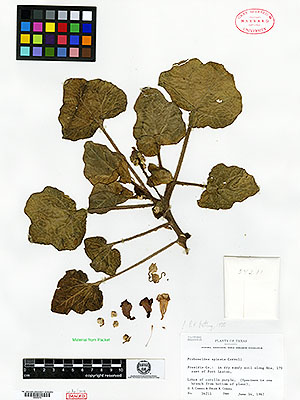The Parras Pupfish was described in 1881, it was restricted to a spring or rather a series of springs in the valley that connects with Laguna de Mayrán near the city of San Pedro in Coahuila, Mexico.
Though some of these springs still exist, they do not harbour their former inhabitants any longer, but instead are filled with intentionally introduced Mosquitofish (Gambusia affinis (Baird & Girard)), Guppys (Poecilia reticulata Peters), and Swordtails (Xiphophorus helleri Heckel).
The Parras Pupfish was last seen in the 1930s and is now extinct.
*********************
References:
[1] M. L. Lozano-Vilano; M. De La Maza-Beningnos: Diversity and status of Mexican killifishes. Journal of Fish Biology 90(1): 1-36. 2016
*********************
edited: 27.05.2019

